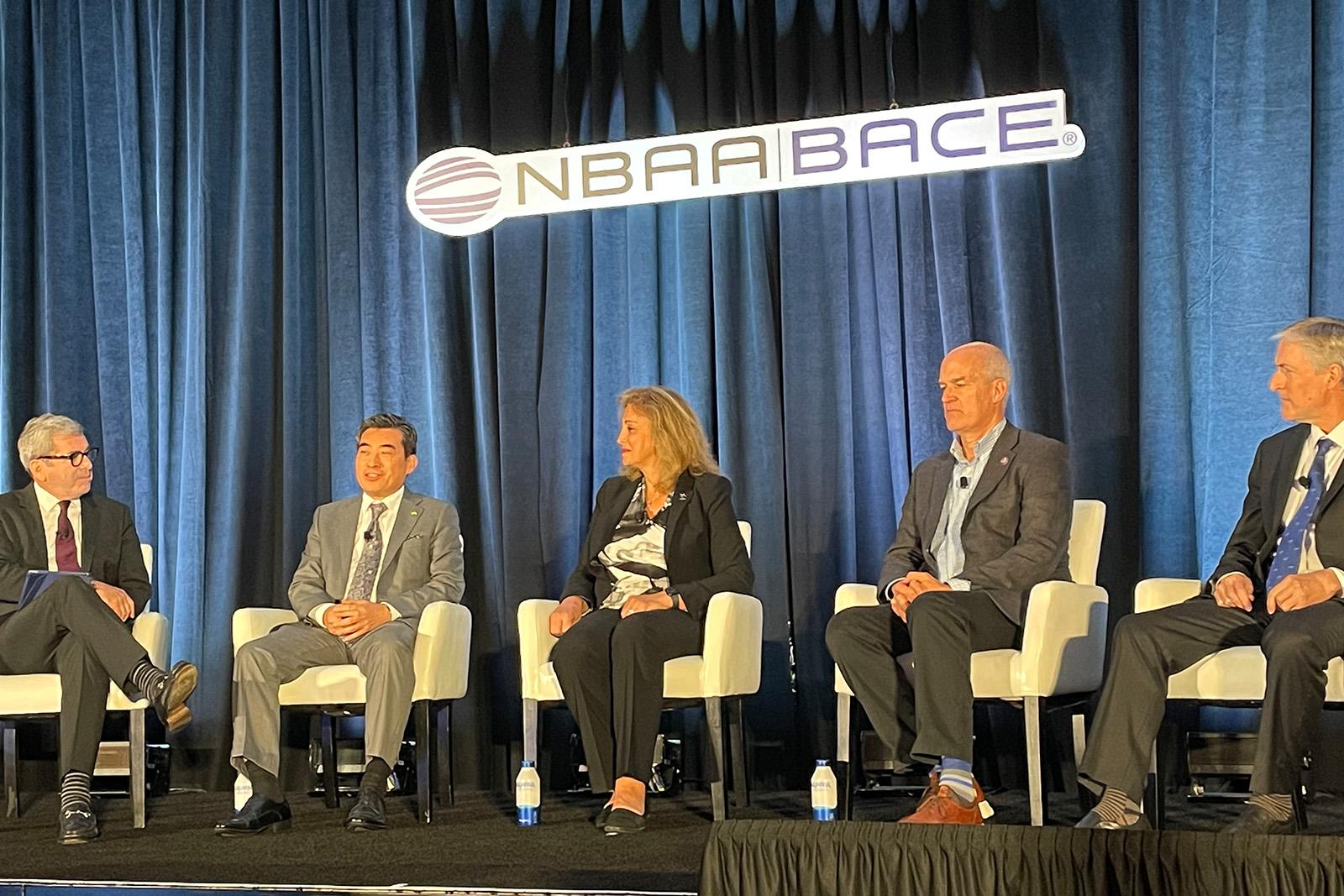
Moderator Miles O’Brien (from left), Hyundai’s Jaiwon Shin, Airbus’ Amanda Simpson, Rep. Rick Larsen (D-Wash.) and Eric Lindbergh.
ORLANDO—It is easy for the aviation industry to pledge to decarbonize by 2050. Actually figuring out how to do that is another matter.
That was the key takeaway from a keynote panel on sustainability Oct. 18 at the NBAA Business Aviation Convention & Exhibition (NBAA-BACE). The good news: Panelists agreed that aviation has made huge strides since the 1960s in becoming more sustainable. The bad news, framed in the words of Amanda Simpson, head of sustainability and technology at Airbus North America: “We’ve got that 20% left, and this is the tough stuff.”
Simpson and her fellow panelists spent an hour discussing the well-known range of solutions to drive aviation to a greener future, including sustainable aviation fuel (SAF), electric and hybrid-electric propulsion and hydrogen. None of them alone, they agreed, will come close to being a silver bullet by 2050.
“There is absolutely no way to achieve zero carbon with large transport carriers [operated by airlines] because there is just not an option today in terms of energy density that could replace jet fuels that we are using,” said Jaiwon Shin, leader of Hyundai Motor Group’s advanced air mobility unit and a former deputy NASA administrator for aeronautics.
However, Shin said, smaller aircraft such as business jets and advanced air mobility (AAM) platforms could reach net-zero goals more quickly and help offset that.
Then there are the limitations of today’s batteries. “Batteries are tough, they’re really tough,” said Erik Lindbergh, co-founder and chairman of VerdeGo Aero, which provides powertrain systems and engineering services to the electric aircraft industry. “And we’re starting to see that in the advanced air mobility industry. The urban air mobility industry markets are shrinking dramatically. . . . My engineers are saying it’s going to be 20 years before all-electric airplanes are going to be able to do robust commercial missions, back-to-back. By then, we’ll have alternative forms of energy, chemical energy, new catalysts.”
The panel also addressed the extraordinary challenge of ramping up U.S SAF production from 5 million gal. in 2021 to the 35 billion gal. a year that will be needed by 2050 to enable the aviation industry to transition off today’s jet fuels. Rep. Rick Larsen (D-Wash.), chair of the House Transportation & Infrastructure’s Aviation subcommittee, allowed that a two-year Blenders Tax Credit, part of the Inflation Reduction Act recently passed by Congress to encourage production of SAF “probably doesn’t live long enough and isn’t big enough.”
The panel agreed that a mix of government and business incentives are needed to encourage early adopters of clean aviation technologies. “At the end of the day, it has to be an economically viable solution,” said Shin. “We cannot do this through regulation only. I think our country can do it because we have the resources, talent and ingenuity. But we have to be serious.”
Lindbergh wants to emulate the success of the 2003 Ansari X Prize and the Orteig Prize that has grandfather, Charles, won for flying solo across the Atlantic Ocean in 1927. Separately at the show, he announced the launch of an effort to create a Forever Flight Alliance Sustainable Aviation Fuels Challenge to award incentive prizes. Lindbergh’s Forever Flight Alliance will work with the X Prize Foundation to identify and create various prize challenges that address the specific barriers that prevent aviation’s acceleration of SAF commercialization. Alliance partners include the participation and support of The Prince Albert II of Monaco Foundation and NBAA, and the Commercial Aviation Alternative Fuels Initiative.
